![現代動力係統理論導論 [Introduction to the Modern Theory of Dynamical Systems]](https://pic.windowsfront.com/10888247/83f4e6dd-457b-4ba7-8dd5-7a2e13453591.jpg)

具體描述
內容簡介
this book provides the first self-contained comprehensive exposition of the theory of dynamical systems as a core mathematical discipline closely intertwined with most of the main areas of mathematics. the authors introduce and rigorously develop the theory while providing researchers interested in applications with fundamental tools and paradigms.the book begins with a discussion of several elementary but fundamental examples. these are used to formulate a program for the general study of asymptotic properties and to introduce the principal theoretical concepts and methods. the main theme of the second part of the book is the interplay between local analysis near individual orbits and the global complexity of the orbit structure. the third and fourth parts develop in depth the theories of !ow-dimensional dynamical systems and hyperbolic dynamical systems.
the book is aimed at students and researchers in mathematics at all levels from ad-vanced undergraduate up. scientists and engineers working in applied dynamics, non-linear science, and chaos will also find many fresh insights in this concrete and clear presentation. it contains more than four hundred systematic exercises.
目錄
preface0. introduction
1. principal branches of dynamics
2. flows, vector fields, differential equations
3. time-one map, section, suspension
4. linearization and localization
part 1examples and fundamental concepts
1. firstexamples
1. maps with stable asymptotic behavior contracting maps; stability of contractions; increasing interval maps
2. linear maps
3. rotations of the circle
4. translations on the torus
5. linear flow on the torus and completely integrable systems
6. gradient flows
7. expanding maps
8. hyperbolic toral automorphisms
9. symbolic dynamical systems sequence spaces; the shift transformation; topological markov chains;
the perron-frobenius operator for positive matrices
2. equivalence, classification, andinvariants
1. smooth conjugacy and moduli for maps equivalence and moduli; local analytic linearization; various types of moduli
2. smooth conjugacy and time change for flows
3. topological conjugacy, factors, and structural stability
4. topological classification of expanding maps on a circle expanding maps; conjugacy via coding; the fixed-point method
5. coding, horseshoes, and markov partitions markov partitions; quadratic maps; horseshoes; coding of the toral automor- phism
6. stability of hyperbolic total automorphisms
7. the fast-converging iteration method (newton method) for the conjugacy problem methods for finding conjugacies; construction of the iteration process
8. the poincare-siegel theorem
9. cocycles and cohomological equations
3. principalclassesofasymptotictopologicalinvariants
1. growth of orbits
periodic orbits and the-function; topological entropy; volume growth; topo-logical complexity: growth in the fundamental group; homological growth
2. examples of calculation of topological entropy
isometries; gradient flows; expanding maps; shifts and topological markov chains; the hyperbolic toral automorphism; finiteness of entropy of lipschitz maps; expansive maps
3. recurrence properties
4.statistical behavior of orbits and introduction to ergodic theory
1. asymptotic distribution and statistical behavior of orbits
asymptotic distribution, invariant measures; existence of invariant measures;the birkhoff ergodic theorem; existence of symptotic distribution; ergod-icity and unique ergodicity; statistical behavior and recurrence; measure-theoretic somorphism and factors
2. examples of ergodicity; mixing
rotations; extensions of rotations; expanding maps; mixing; hyperbolic total automorphisms; symbolic systems
3. measure-theoretic entropy
entropy and conditional entropy of partitions; entropy of a measure-preserving transformation; properties of entropy
4. examples of calculation of measure-theoretic entropy
rotations and translations; expanding maps; bernoulli and markov measures;hyperbolic total automorphisms
5. the variational principle
5.systems with smooth invar1ant measures and more examples
1. existence of smooth invariant measures
the smooth measure class; the perron-frobenius operator and divergence;criteria for existence of smooth invariant measures; absolutely continuous invariant measures for expanding maps; the moser theorem
2. examples of newtonian systems
the newton equation; free particle motion on the torus; the mathematical pendulum; central forces
3. lagrangian mechanics
uniqueness in the configuration space; the lagrange equation; lagrangian systems; geodesic flows; the legendre transform
4. examples of geodesic flows manifolds with many symmetries; the sphere and the toms; isometrics of the hyperbolic plane; geodesics of the hyperbolic plane; compact factors; the dynamics of the geodesic flow on compact hyperbolic surfaces
5. hamiltonian systems symplectic geometry; cotangent bundles; hamiltonian vector fields and flows;poisson brackets; integrable systems
6. contact systems hamiltonian systems preserving a 1-form; contact forms
7. algebraic dynamics: homogeneous and afline systems part 2local analysis and orbit growth
6.local hyperbolic theory and its applications
1. introduction
2. stable and unstable manifolds
hyperbolic periodic orbits; exponential splitting; the hadamard-perron the-orem; proof of the hadamard-perron theorem; the inclination lemma
3. local stability of a hyperbolic periodic point
the hartman-grobman theorem; local structural stability
4. hyperbolic sets
definition and invariant cones; stable and unstable manifolds; closing lemma and periodic orbits; locally maximal hyperbolic sets
5. homoclinic points and horseshoes
general horseshoes; homoclinic points; horseshoes near homoclinic poi
6. local smooth linearization and normal forms
jets, formal power series, and smooth equivalence; general formal analysis; the hyperbolic smooth case
7.transversality and genericity
1. generic properties of dynamical systems
residual sets and sets of first category; hyperbolicity and genericity
2. genericity of systems with hyperbolic periodic points
transverse fixed points; the kupka-smale theorem
3. nontransversality and bifurcations
structurally stable bifurcations; hopf bifurcations
4. the theorem of artin and mazur
8.orbitgrowtharisingfromtopology
1. topological and fundamental-group entropies
2. a survey of degree theory
motivation; the degree of circle maps; two definitions of degree for smooth maps; the topological definition of degree
3. degree and topological entropy
4. index theory for an isolated fixed point
5. the role of smoothness: the shub-sullivan theorem
6. the lefschetz fixed-point formula and applications
7. nielsen theory and periodic points for toral maps
9.variational aspects of dynamics
1. critical points of functions, morse theory, and dynamics
2. the billiard problem
3. twist maps
definition and examples; the generating function; extensions; birkhoff peri-odic orbits; global minimality of birkhoff periodic orbits
4. variational description of lagrangian systems
5. local theory and the exponential map
6. minimal geodesics
7. minimal geodesics on compact surfaces
part 3low-dimensional phenomena
10. introduction: what is low-dimensional dynamics?
motivation; the intermediate value property and conformality; vet low-dimensional and low-dimensional systems; areas of !ow-dimensional dynamics
11.homeomorphismsofthecircle
1. rotation number
2. the poincare classification rational rotation number; irrational rotation number; orbit types and mea-surable classification
12. circle diffeomorphisms
1. the denjoy theorem
2. the denjoy example
3. local analytic conjugacies for diophantine rotation number
4. invariant measures and regularity of conjugacies
5. an example with singular conjugacy
6. fast-approximation methods
conjugacies of intermediate regularity; smooth cocycles with wild cobound-aries
7. ergodicity with respect to lebesgue measure
13. twist maps
1. the regularity lemma
2. existence of aubry-mather sets and homoclinic orbits
aubry-mather sets; invariant circles and regions of instability
3. action functionals, minimal and ordered orbits
minimal action; minimal orbits; average action and minimal measures; stable sets for aubry-mather sets
4. orbits homoclinic to aubry-mather sets
5. nonexisience of invariant circles and localization of aubry-mather sets
14.flowsonsurfacesandrelateddynamicalsystems
1. poincare-bendixson theory
the poincare-bendixson theorem; existence of transversals
2. fixed-point-free flows on the torus
global transversals; area-preserving flows
3. minimal sets
4. new phenomena
the cherry flow; linear flow on the octagon
5. interval exchange transformations
definitions and rigid intervals; coding; structure of orbit closures; invariant measures; minimal nonuniquely ergodic interval exchanges
6. application to flows and billiards
classification of orbits; parallel flows and billiards in polygons
7. generalizations of rotation number
rotation vectors for flows on the torus; asymptotic cycles; fundamental class and smooth classification of area-preserving flows
15.continuousmapsoftheinterval
1. markov covers and partitions
2. entropy, periodic orbits, and horseshoes
3. the sharkovsky theorem
4. maps with zero topological entropy
5. the kneading theory
6. the tent model
16.smoothmapsoftheinterval
1. the structure of hyperbolic repellers
2. hyperbolic sets for smooth maps
3. continuity of entropy
4. full families of unimodal maps part 4hyperbolic dynamical systems
17.surveyofexamples
1. the smale attractor
2. the da (derived from anosov) map and the plykin attractor
the da map; the plykln attractor
3. expanding maps and anosov automorphisms of nilmanifolds
4. definitions and basic properties of hyperbolic sets for flows
5. geodesic flows on surfaces of constant negative curvature
6. geodesic flows on compact riemannian manifolds with negative sectional curvature
7. geodesic flows on rank-one symmetric spaces
8. hyperbolic julia sets in the complex plane rational maps of the riemann sphere; holomorphic dynamics
18.topologicalpropertiesofhyperbolicsets
1. shadowing of pseudo-orbits
2. stability of hyperbolic sets and markov approximation
3. spectral decomposition and specification
spectral decomposition for maps; spectral decomposition for flows; specifica- tion
4. local product structure
5. density and growth of periodic orbits
6. global classification of anosov diffeomorphisms on tori
7. markov partitions
19. metric structure of hyperbolic sets
1. holder structures
the invariant class of hsider-continuons functions; hslder continuity of conju-gacies; hslder continuity of orbit equivalence for flows; hslder continuity and differentiability of the unstable distribution; hslder continuity of the jacobian
2. cohomological equations over hyperbolic dynamical systems
the livschitz theorem; smooth invariant measures for anosov diffeomor-phisms; time change and orbit equivalence for hyperbolic flows; equivalence of torus extensions
20.equilibriumstatesandsmoothinvariantmeasures
1. bowen measure
2. pressure and the variational principle
3. uniqueness and classification of equilibrium states
uniqueness of equilibrium states; classification of equilibrium states
4. smooth invariant measures
properties of smooth invariant measures; smooth classification of anosov dif-feomorphisms on the torus; smooth classification of contact anosov flows on 3-manifolds
5. margulis measure
6. multiplicative asymptotic for growth of periodic points
local product flow boxes; the multiplicative asymptotic of orbit growth supplement
s. dynamical systems with nonuniformly hyperbolic behavior byanatolekatokandleonardomendoza
1. introduction
2. lyapunov exponents
cocycles over dynamical systems; examples of cocycles; the multiplicative ergodic theorem; osedelec-pesin e-reduction theorem; the rue!!e inequality
3. regular neighborhoods
existence of regular neighborhoods; hyperbolic points, admissible manifolds, and the graph transform
4. hyperbolic measures
preliminaries; the closing lemma; the shadowing lemma; pseudo-markov covers; the livschitz theorem
5. entropy and dynamics of hyperbolic measures
hyperbolic measures and hyperbolic periodic points; continuous measures and transverse homoclinic points; the spectral decomposition theorem; entropy,horseshoes, and periodic points for hyperbolic measures
appendix
a. background material
1. basic topology
topological spaces; homotopy theory; metric spaces
2. functional analysis
3. differentiable manifolds
differentiable manifolds; tensor bundles; exterior calculus; transversality
4. differential geometry
5. topology and geometry of surfaces
6. measure theory
basic notions; measure and topology
7. homology theory
8. locally compact groups and lie groups
notes
hintsandanswerstotheexercises
references
index
前言/序言
用戶評價
最近我入手瞭這本《現代動力係統理論導論》,不得不說,它是一部極具挑戰性但也極其 rewarding 的作品。我一直對非綫性動力學領域充滿瞭興趣,尤其關注混沌現象背後的數學原理。這本書在這方麵簡直是我的“解藥”。作者在探討蝴蝶效應和分形幾何時,那種將微小擾動放大到宏觀尺度,以及在看似混亂中發現隱藏秩序的能力,讓我拍案叫絕。我特彆喜歡書中關於吸引子概念的闡述,無論是奇特的吸引子還是極限環,都展示瞭動力係統如何趨嚮穩定或周期性的狀態。閱讀過程中,我常常停下來,反復咀嚼作者對不同類型吸引子之間關係的分析,以及它們是如何影響係統的長期行為的。這本書不僅提供瞭理論框架,更像是為讀者提供瞭一套探索復雜係統行為的“工具箱”。那些詳細的例證和數學推導,雖然需要耐心和專注,但一旦理解,便能體會到那種智力上的豁然開朗。我發現,通過閱讀這本書,我對於日常生活中遇到的許多看似難以預測的現象,如天氣變化、金融市場的波動,都有瞭新的理解角度。
評分坦白講,我最初是被這本書的標題吸引的,我對“現代”和“動力係統”這些詞匯充滿瞭好奇。拿到書後,我發現它並非一本“速成”指南,而是一部需要細細品味的學術著作。我特彆欣賞作者在介紹一些經典動力係統模型時,所展現齣的曆史視角和思想演變過程。例如,在講述龐加萊-貝特朗定理的由來時,我仿佛能感受到數學傢們在探索未知時的艱辛與智慧。書中關於“全局分岔”和“局部分岔”的區分,以及不同分岔類型所對應的係統行為的改變,讓我對係統的“質變”有瞭更深刻的理解。我也被作者在分析耦閤振子係統時的細緻入微所打動,如何從簡單的單振子模型過渡到復雜的耦閤係統,並分析其中的同步現象。這本書的深度和廣度都令人印象深刻,它不僅僅停留在理論的錶層,而是深入到動力係統理論的核心問題。我感覺,每一次閱讀都能有所新的領悟,就像在不斷剝離洋蔥的層層外衣,最終觸碰到核心的真諦。
評分不得不說,這本書的“門檻”確實不低,但一旦跨過去,收獲是巨大的。我從這本書中獲得的,是一種全新的觀察世界的方式。在學習瞭遍曆理論和統計力學之間的聯係之後,我纔真正理解瞭微觀粒子的無規則運動如何宏觀上錶現齣統計規律。作者對於不可積係統和 KAM 定理的講解,雖然復雜,但卻揭示瞭保守係統中規則運動如何被微小攝動破壞,從而産生混亂。我特彆著迷於書中關於“遍曆性”的探討,它告訴我們,一個係統在足夠長的時間內,其狀態會覆蓋其相空間的所有可能區域。這對於理解統計力學中的許多基本假設至關重要。同時,作者還巧妙地將抽象的數學概念與物理學中的實際問題聯係起來,比如在講解軌道穩定性時,我看到瞭它在天體軌道力學中的應用。這本書要求讀者具備一定的數學基礎,但如果你願意投入時間和精力,它會給你帶來超越理論學習本身的價值。它教會我如何去“看”那些肉眼無法直接觀測到的係統演化軌跡,以及如何在復雜性中尋找規律。
評分這是一本極其嚴謹且富有啓發性的著作,它為我打開瞭理解現代動力學係統理論的一扇大門。我尤其被書中關於“測度”和“熵”在動力係統中的作用的闡釋所吸引。作者深入淺齣地講解瞭如何在相空間中定義測度,以及如何量化係統的混亂程度,即通過信息熵來衡量。這對於理解混沌係統的不可預測性,以及其信息增長的速度,有著至關重要的作用。我花瞭不少時間去理解書中關於“遍曆性”和“混閤性”的區彆,以及它們如何影響係統的長期統計性質。作者在講解這些概念時,采用瞭多種數學工具和方法,使得復雜的理論變得更加清晰易懂。這本書的理論體係非常完整,它不僅涵蓋瞭基礎的映射和流,還深入探討瞭分岔理論、混沌理論以及它們在各個領域的應用。每一次翻閱,我都能從中學到新的知識,並將其與我之前所學到的知識融會貫通。它是一本真正能夠提升讀者理論認知水平的書籍,對於任何希望深入研究動力係統的人來說,都絕對值得擁有。
評分這部關於現代動力學係統理論的著作,我早就聽說過它的聲名遠揚,但直到最近纔有機會真正翻閱。初次接觸,最直觀的感受是它那龐雜卻又井然有序的知識體係。我尤其欣賞作者在開篇部分對於“係統”這一核心概念的闡釋,那絕非簡單的定義堆砌,而是深入淺齣地剖析瞭其內在的演化邏輯和普遍性。讀到關於映射的迭代和不動點的討論時,仿佛打開瞭一扇通往奇妙數學世界的大門,那些看似抽象的概念,在作者的筆下變得生動且富有洞察力。書中對於周期軌道的分類和穩定性分析的部分,更是將理論的嚴謹性展現得淋灕盡緻。我能夠想象,對於那些剛剛踏入這個領域的研究者來說,這無疑是一本奠定堅實基礎的寶典。作者在語言的運用上也頗為講究,既有嚴密的數學錶述,又不乏引人入勝的類比和解釋,使得即便是復雜的概念,也能夠被逐步消化。我想,對於任何對理解事物演化規律充滿好奇的人來說,這本書都將是一次令人難忘的智力冒險,它不僅僅是理論的堆砌,更是一種思考方式的啓迪。
評分動力係統的經典,推薦入手
評分經典的動力係統教材。有興趣的可以看看
評分此書全麵論證瞭現代動力係統理論,是高年級大學本科和研究生的參考教材。
評分此書全麵論證瞭現代動力係統理論,是高年級大學本科和研究生的參考教材。
評分為瞭學習而買的專業書,在學習中能夠用到。
評分非常厚重、經典的一本動力係統教科書,即使沒有足夠時間去細讀,收藏一本也是值瞭。
評分此書全麵論證瞭現代動力係統理論,是高年級大學本科和研究生的參考教材。
評分很厚實的一本書!專業,高教齣版社推齣瞭中文版!
評分this book is suitable for all people in the first process to learn some basis knowlege. i am studying and thinking this course this year. i hope it can play imoportant role for my research level.
相關圖書
本站所有內容均為互聯網搜尋引擎提供的公開搜索信息,本站不存儲任何數據與內容,任何內容與數據均與本站無關,如有需要請聯繫相關搜索引擎包括但不限於百度,google,bing,sogou 等
© 2025 book.coffeedeals.club All Rights Reserved. 靜流書站 版權所有

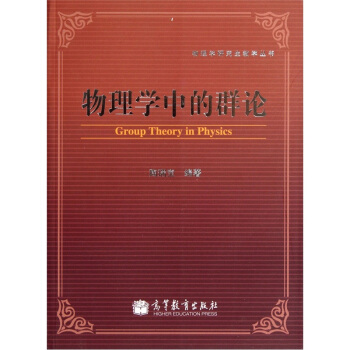
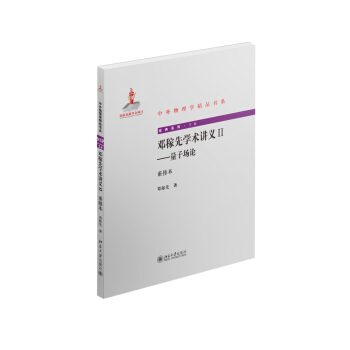
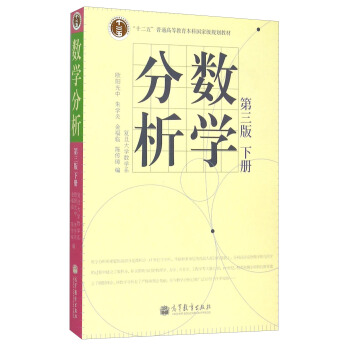
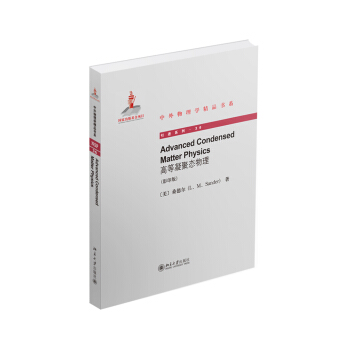
![樸素集閤論 [Naive Set Theory] pdf epub mobi 電子書 下載](https://pic.windowsfront.com/10096469/4815a1ff-066e-4780-9ac2-ebf51237a8be.jpg)


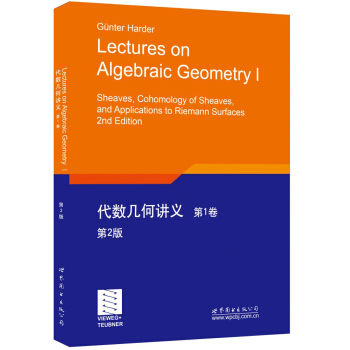
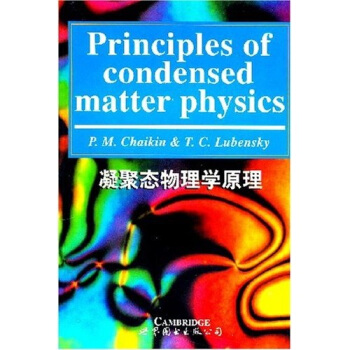

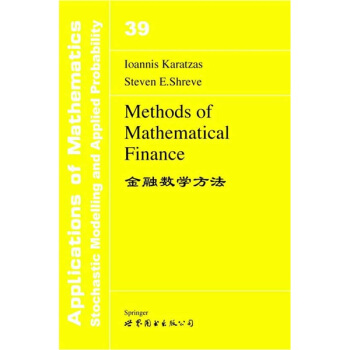

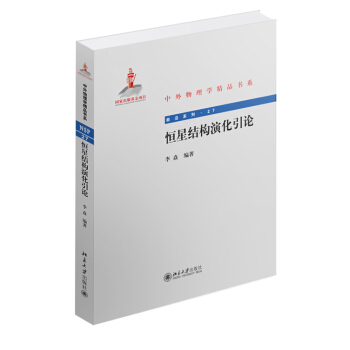
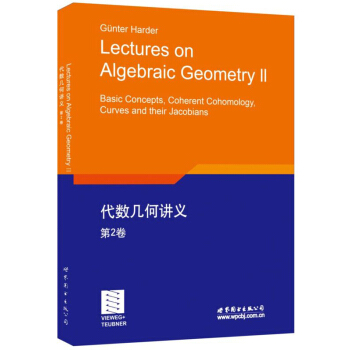
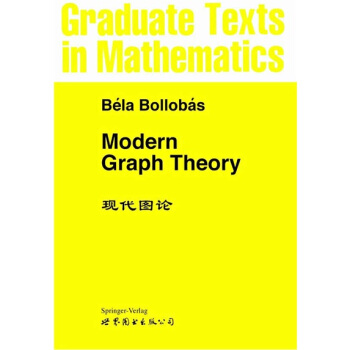
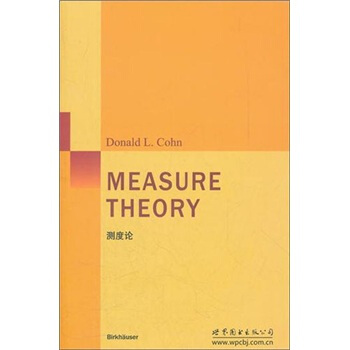
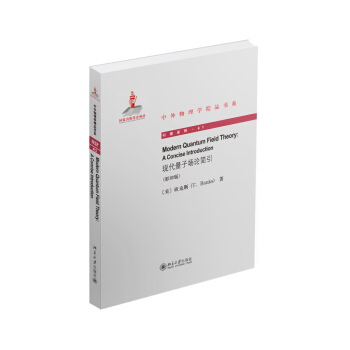
![群論導論(第4版)(英文版) [An Introduction to the Theory of Groups] pdf epub mobi 電子書 下載](https://pic.windowsfront.com/10184591/0899ce80-e4c2-49b6-9e6f-4daa065c4793.jpg)
![超穎材料電動力學(影印版) [ELECTRODYNAMICS OF METAMATERIALS] pdf epub mobi 電子書 下載](https://pic.windowsfront.com/11114418/rBEGF1CZ5iAIAAAAAAArezuIe4oAAAZGAB8aaAAACuT116.jpg)
![流形、張量分析和應用(第2版) [Manifollds, Tensor Analysis, and Applications 2nd ed] pdf epub mobi 電子書 下載](https://pic.windowsfront.com/11483421/53a8c88bNd5252fe2.jpg)